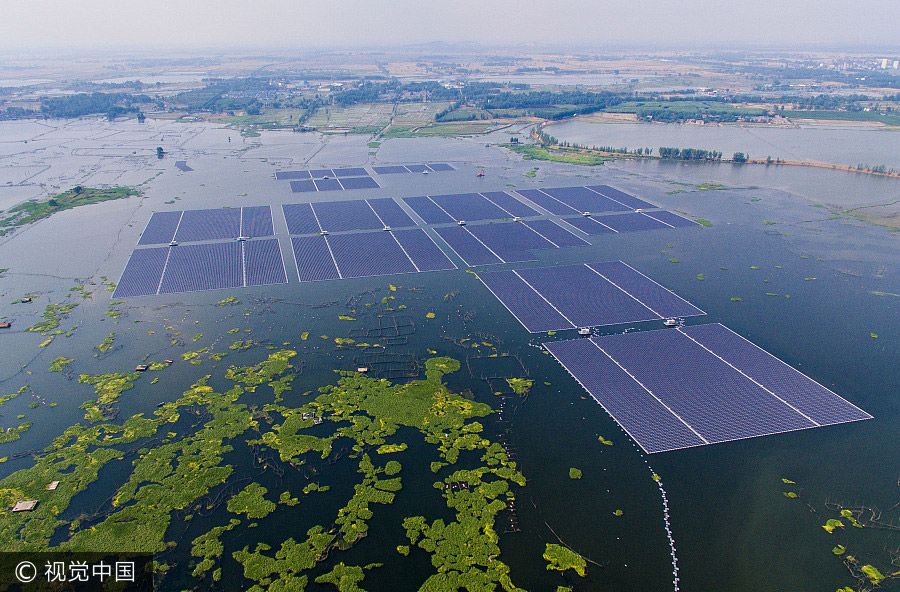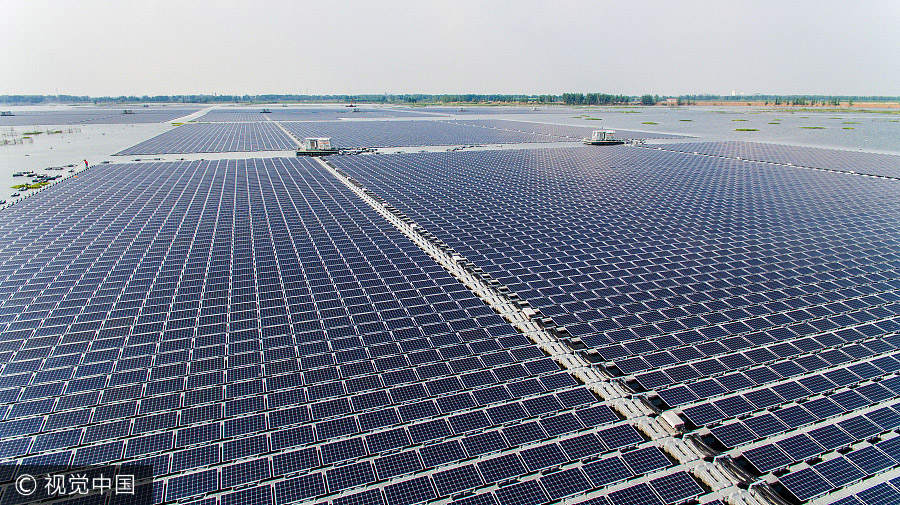China has become home to the world’s largest floating solar farm.
More than 120,000 photovoltaic panels were installed on floats covering around 86 hectares on the water surface China Daily reports that the farm started generating electricity earlier this August.
Floating solar farms have several advantages, not the least of which is they don’t use up valuable land in densely populated areas. “We want to make sure we’re using free space effectively,” the plant manager said to Quartz.

As reported by Clean Technica, the panels also help to conserve precious freshwater supplies by lowering the amount of evaporation into the surrounding atmosphere.
In return, the water keeps ambient temperatures around the solar panels lower, which helps boost their efficiency and limit long-term heat-induced degradation.
Appropriately, it has been built atop a former coal mine, which had become a lake after being flooded with groundwater.

The “pleasing symbolism” of building the solar farm on a flooded coal mine, as the World Economic Forum put it, is also practical. China, the world’s biggest investor in wind and solar energy, looks committed to creating space for renewable energy projects.
Xiao Fuqin, deputy general manager of the branch, said that the floats are 200 to 300 meters away from the bank on the subsidence area that is 400 hectares, to ensure the decreasing water does not impact the farm.

"On the surface, the floats just stay on the water, and the truth is that more than 1,000 reinforced concrete piles are installed on the bed, keeping the floats in order," Xiao said to the China Daily.
The farm has a life of 25 years, and that demands the facilities must be designed to resist the aging factors, such as the heat, salt and humidity that comes from being on the water.

Floating solar farms are not new. But China is taking them to another level altogether. The previous record for the largest such farm was set in the UK by a farm that has the capacity to produce just 6.3 megawatts.
That will be overshadowed by a plant in Japan, due to come online next year, that will produce 13.7MW - still a long way behind China’s new facility.

China is now the world’s largest renewable energy investor. According to Time, China’s government promises to spend $360 billion on clean energy projects by 2020, creating 13 million new jobs in the process.
As the Huainan project demonstrates, the Asian superpower is pushing the boundaries of green tech, whether wind, solar or hydropower.

In a bid to clean up its smog-filled skies, China has also announced closures of coal-fired power plants and suspension of plans to build new ones.
China's renewable energy trajectory can be viewed in counterpoint to that of the US. US withdrawed from the 2015 Paris Climate Agreement. Without the US in the accord, it will leave a superpower-shaped hole in global climate-change leadership - one that China seems willing and able to fill.


















